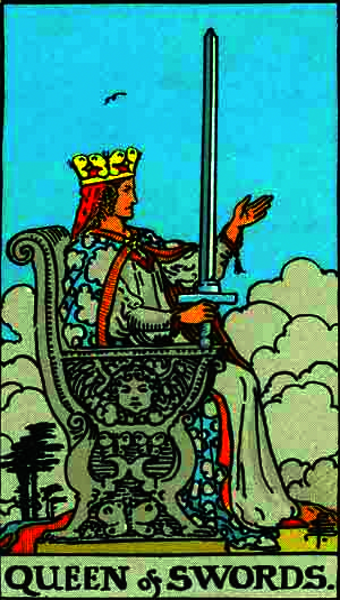
A woman of regal bearing sits on a prominence, Sword in her right hand, held upright. He left hand is raised slightly and extended. On her wrist is a beaded bracelet. She is facing squarely to our right. Behind her are clouds and trees that hint at a breeze. Her crown consists of butterflies.
On her throne is the image of a Cherub. It is depicted as having a childlike face, and wings. This imagery hides some considerable symbolism.
First, in the Bible the Cherubim are not chubby little naked babies floating around with tiny wings. They are mighty heavenly beings.
In the story of the Garden of Eden, when Adam and Eve were driven out, Cherubim were set at the entrance with a flaming sword to keep the humans out (Genesis 3:24). It would have spoiled the effect to have these creatures be naked little babies. They were large and terrifying.
Cherubim were depicted on the Ark of the Covenant: “And thou shalt make two cherubims [sic] of gold, of beaten work shalt thou make them, in the two ends of the mercy seat.” (Exodus 25:18).
Cherubim had four faces: an ox, a lion, an eagle, and a man (Ezekiel 1:10). These correspond to the four images depicted on the Wheel of Fortune and the World.

The butterfly also has important symbolism. The word for butterfly in Greek is “Psyche,” which is also the word for “soul.” The butterfly was thought to represent the soul; and its transformation from caterpillar to butterfly represented metempsychosis – the movement of the soul between reincarnations.
The Cups, then, stand not just for emotions or love, but for Spirit as well.
